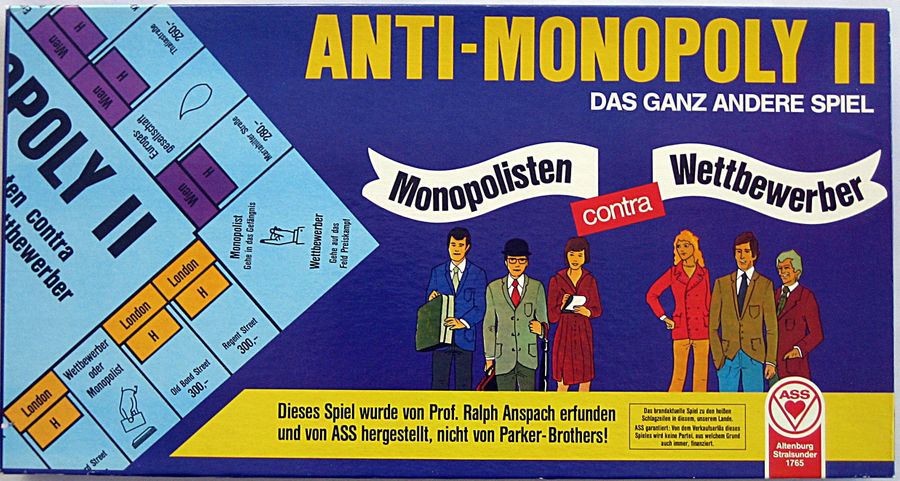Anti-Monopoly II (1977) Board Game
Anti-Monopoly II is a board game created by Ralph Anspach in 1977 as a response to the classic game Monopoly. It was designed to promote competition and challenge the traditional monopolistic practices depicted in Monopoly. The game has since gained a following for its unique take on economic gameplay.
Game Components of Anti-Monopoly II
How To Setup Anti-Monopoly II
To set up the game, players first organize the board to reflect a monopolized market state. Each player chooses whether to play as a monopolist or a competitor, which dictates their starting conditions and rules. Monopolists aim to maintain and expand their monopolies, while competitors work to break them up and establish a free market system. The game includes detailed setup instructions in the rulebook to ensure a smooth start.
Gameplay Mechanics and Game Objective
Player Experience
Playing Anti-Monopoly II offers a unique blend of strategy and economic insight. The game challenges players to think critically about market structures and the impact of monopolies. The dual roles of monopolist and competitor add a layer of complexity, making each game session different and engaging. Players must balance resource management with strategic decision-making to achieve their objectives.
Pros
Cons
Personal Thoughts on Anti-Monopoly II
Anti-Monopoly II is ideal for those interested in economics, strategy, and alternative perspectives on the traditional Monopoly game. It’s a great choice for players who enjoy complex gameplay and are looking for a game that offers more than just real estate trading. However, it may not be the best fit for casual gamers or those seeking a quick, simple game experience.
We are supported by our audience. When you purchase through links on our site, we may earn an affiliate commission, at no extra cost for you. Learn more.

